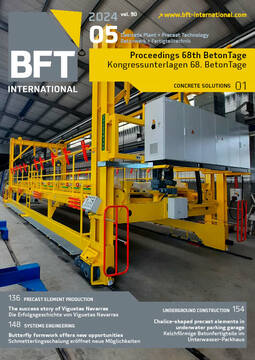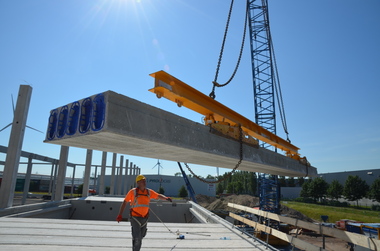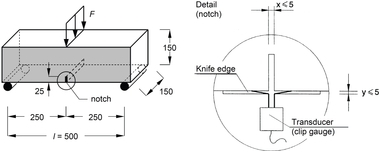Durability of concrete structures based on the Exposure Resistance Class System
In 2021, the German Committee for Reinforced Concrete (DafStb) formulated, in a decision of principle, the goal that climate neutrality of concrete construction methods must be achieved by 2024 at the latest. The short- and medium-term measures for implementing the decision were summarized in a DafStb Roadmap (see https://www.dafstb.de/nachhaltigkeit.html). The DafStb sub-committee “Durability of Concrete Members is currently preparing the draft of this Directive, as based on a concept completed and unanimously” adopted in 2023.
The new EC2 contains so-called Exposure Resistance Classes (ERC) for carbonation- and chloride-induced reinforcement corrosion. In this context, concretes are classified in an ERC based on the results of a performance test (comparable to classification of a concrete based on a compressive strength test). Depending on the ERC, the exposure class, the concrete cover is determined based on compressive strength, the service life (50 and 100 years) as well as after-treatment.
The ERC Directive of the DAfStb picks up on the performance-based ERC concept of the EC2. This takes place, in an initial step, for Exposure Classes XC1 to XC4 and XD1/XS1, which primarily occur in building construction (around 80 % of the current concrete market). It extends work based on additional European standards and/or their current drafts (e.g., prEN 206-100) and national regulations (the complete new DIN 1045 series, BAW Merkblatt MDCC). In contrast to the regulations of the future EC2, the ERC Directive reduces the resistance classes to a moderate number of easily understandable practice-related work. The Exposure Classes XF1and XA1, likewise relevant in building construction, are also included by descriptive elements in the context of the ERC directive.
The new ERC Directive can be used as an alternative to the descriptive requirements of the new DIN 1045 standard generation. When the planner decides on the ERC concept, this concept will apply to the complete design and construction process for the relevant task: i.e., construction element(s) or entire construction projects.






